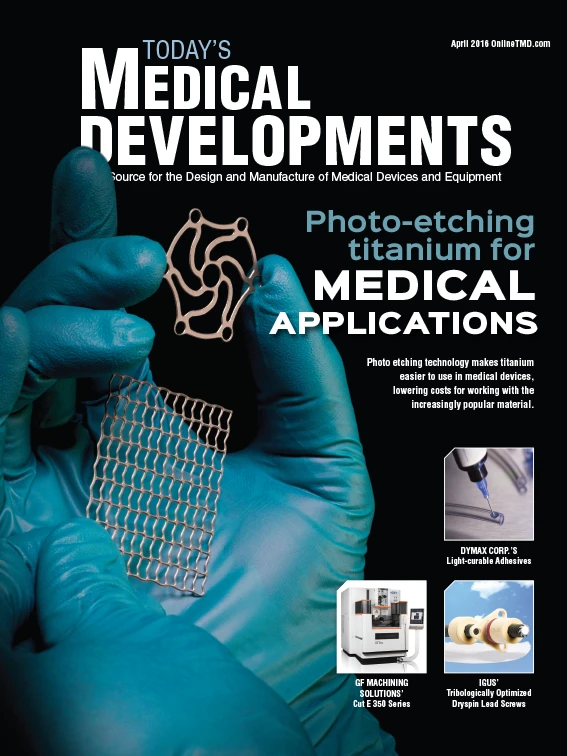
O-rings, used for sealing, have applications in several industries, especially medical. They account for a significant amount of the global market for gaskets and seals, expected to reach $45.8 billion by 2020, according to Global Industry Analysts.
O-rings are popular for designers because their round profile allows for almost universal use in either axial or radial sealing arrangements, under static and moderately dynamic load conditions. Their basic geometry lends itself to relatively straightforward manufacture by either injection molding or compression molding in a range of materials.
The O-ring’s simple form, however, belies the material and production technologies behind this simple circle of rubber. To ensure long-life and integrity, the O-ring must perfectly match system requirements. This may involve withstanding extreme temperatures, high pressures, and aggressive contact media. They may also need to provide low-friction properties for automated assembly in dynamic environments.

Specifying the optimum O-ring for an application needs a precise understanding of system needs along with specific knowledge of material properties. Working with an O-ring supplier with expertise in these areas who can give material test results is vital in ensuring the performance of equipment or manufacturing processes. This is particularly important in some of the more demanding fields such as life sciences. Global Industry Analysts states that complex applications in sectors such as medical, will result in manufacturing and design challenges.
Our company has seen this trend and one of the ways it has responded is by redefining precision when producing the O-ring, taking it to new levels for the most difficult of applications.
O-ring production
The Trelleborg Sealing Solutions’ (TSS) facility in Stein am Rhein, Switzerland, is one of four sites specializing in liquid silicone rubber (LSR) injection molding. Produced here are high precision-engineered molded parts for global and local customers in medical, automotive, and other industrial fields.
Conventional elastomer O-ring production is achieved either by injection or compression molding and typically requires deflashing – either mechanically, by cutting or punching, or cryogenically. Secondary process steps introduce variability and manufacturing risks along with direct and potentially indirect costs.
In Trelleborg’s LSR liquid injection molding process for O-rings, parts are molded without flash, with sprue or overflow separable from the functional component, so no secondary finishing operations are required.
This process has been used for a 1.4mm x 1.1mm micro-component produced in millions of pieces annually for a medical device. These parts are manufactured by directly injecting LSR material into each cavity of a multi-cavity tool. The O-rings are then removed from the cavities by a special robotic gripper arm.
Since the parts are too small to engrave for traceability, the O-rings are loaded into containers by cavity.

Developing the process to produce tiny O-rings has many challenges. One of these was to develop a robotic gripper arm that could handle parts weighing less than 0.0093g each; a component so small and light that no human hand could easily handle it.
Another challenge – the electric charge of the minute O-rings – caused them to fly all over the place when released from the gripper. Their feather-like weight made it impossible to get them placed in designated containers post-production. To address this, engineers developed an Ionicator to unload the parts on their way from the mold into the container.
Implementing this process reduced material consumption by more than 30% and achieved zero-defect quality levels right from production. These micro-O-rings are currently produced on tools with up to 32-cavities.
The next goal for the LSR technical team is to double the number of cavities to 64, not just for O-rings, but also for other custom micro-parts for innovative medical devices.
Trelleborg Sealing Solutions
About the authors: Ursula Nollenberger is the product line director for LSR Components and Jarno Burkhardt is the general manager of the Stein am Rhein facility, Trelleborg Sealing Solutions. They can be reached at tssusa@trelleborg.com.

Explore the April 2016 Issue
Check out more from this issue and find your next story to read.
Latest from Today's Medical Developments
- Machine learning framework enhances precision, efficiency in metal 3D printing
- SkillMill – 60-year-old milling machine with digital twin
- Lumetrics’ OptiGauge II EMS
- EMI completes installation of 128-axis CNC turning & milling machine
- Ottobock invests in innovative technologies from MIT start-ups
- Air Turbine Technology's high-speed live tools for Swiss Lathes
- Sandvik announces several software acquisitions
- Dart Controls’s EZ VFD, variable frequency drives






